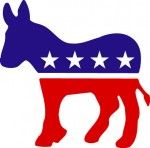What’s Left: Necessary Spending

It’s no accident that the Right has stopped complaining about the President and the Federal Reserve’s (Fed) monetary policy – we have a hold on them. After seasonally adjusted unemployment reached the year-long high of 9.8 percent in November, the second round of Quantitative Easing (QE) has lowered unemployment to 9.0 percent in January of this year. America’s Gross Domestic Product has grown by no less than 1.7 percent per month (adjusted for inflation) since November of last year. So it’s undeniable that our government’s actions are working, but what exactly is quantitative easing?
Quantitative Easing is when the Fed buys treasury bonds in order to increase the money supply, which, in turn, decreases the interest rate.
Fed Chairman Ben Bernanke got into a bit of hot water when he claimed that quantitative easing isn’t the same as printing money – and it certainly does sound like printing money – but in actuality the Fed uses the money for stimulating spending, not for paying off government debt. The act of printing money to buy off government debt is called ‘monetizing’ the debt, and generally will increase the rate of inflation: something to avoid during a period of recession.
The Right worries about QE because it reflects expansionary fiscal policy – an increase in spending, matched with an increase in taxation. All economists agree that increasing spending while decreasing taxes is harmful to the economy, yet the 112th Congress has vowed to fight to decrease taxes.
It isn’t as though the idea of increased government spending is controversial: it goes without saying that Roosevelt’s deficit spending in the 40s, and even more recently, the stimulus package by President Obama, pulled America out of prolonged recession and created millions of jobs. So, what’s with the complaints? It seems obvious that spending works, so why not increase taxes to match it?
Expansionary monetary policy has always been a fear of the Right. Now, more than ever, they will not support any sort of increase in taxes (see: Bush Tax Cuts extensions), even for those who make over $250,000 per year. For the well-informed, this seems fairly hypocritical, especially when Republican ‘God’ Ronald Reagan‘s Tax Equity and Fiscal Responsibility Act of 1982 is the “largest peacetime tax increase in American History” according to U.S. Department of the Treasury.
Still, the fact remains that the Right fears Quantitative Easing, and feels that the Fed’s actions will lead only to more, and more painful, economic downturns. This idea is not echoed through the economic community, as the two most influential economists of the last decade, Nobel Prize winner Paul Krugman and Fed Chairman Ben Bernanke, have both hailed QE as the single best way to stimulate the economy and create jobs, while having a relatively small effect on the deficit. In fact, many, including The Economist, believe that the only real problem associated with the second round of QE is that the Fed will back off too soon – that Bernanke will assume all is well and flood the market with bonds, increasing the interest rate and discouraging investment; leading us right back into another recession.
The Right is so incredibly stubborn; stuck in the belief that the key to fiscal success is the same as their so-called “fiscal responsibility” – or a lack of any sort of government spending. Where does money for alternative energy, infrastructure, NASA or cancer research come from? It’s not as if the Left is asking for money to slaughter puppies and outlaw ice cream, it’s money to address the obvious needs of our country as a whole. The Left and the Right may disagree over the best way to fix our country’s financial state, but it’s not as if either is trying to run the country into the ground. It’s time to end the inflammatory partisan rhetoric and get back to positive legislation that echoes the needs of all Americans.
It’s time to realize that those who make millions of dollars a year don’t need more money, but that they need to help out the people who can’t help themselves. Expansionary monetary policy is a proven fix for an ailing economy, so let’s get on it. Quantitative easing is the key to fixing our ailing economy.








